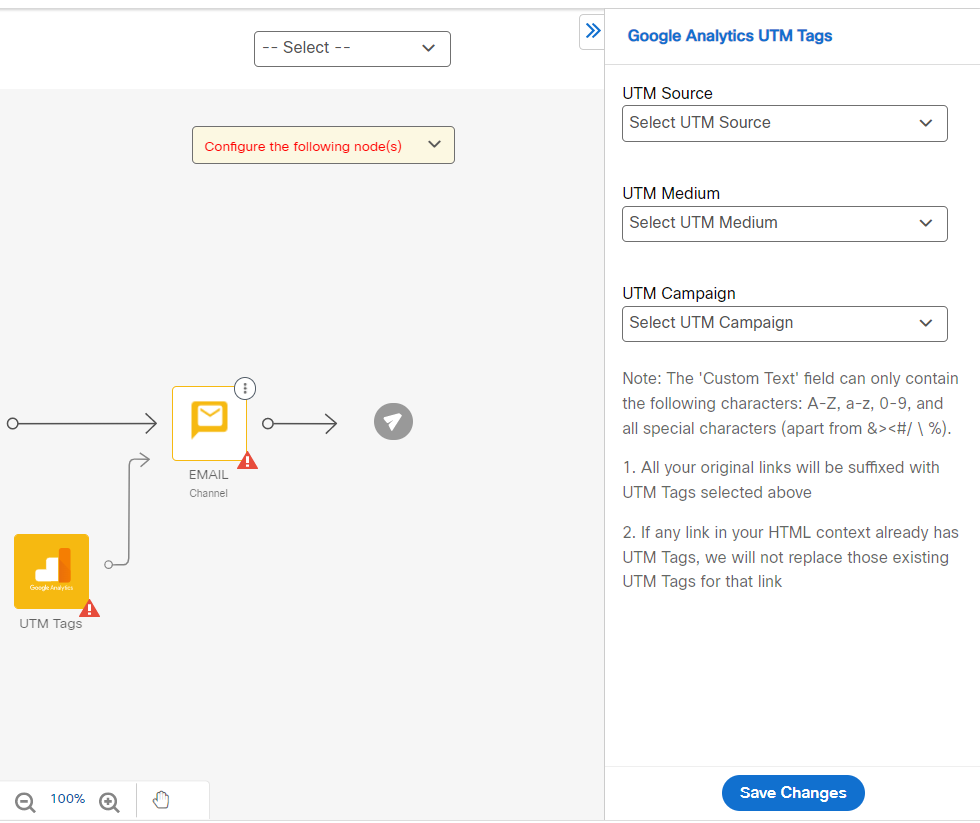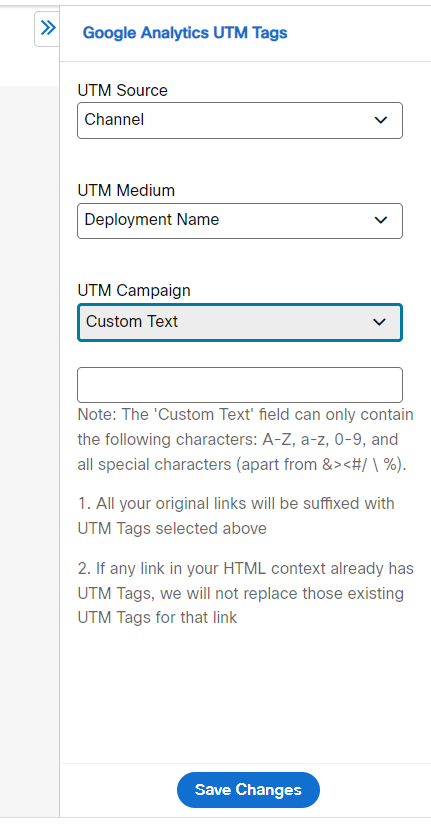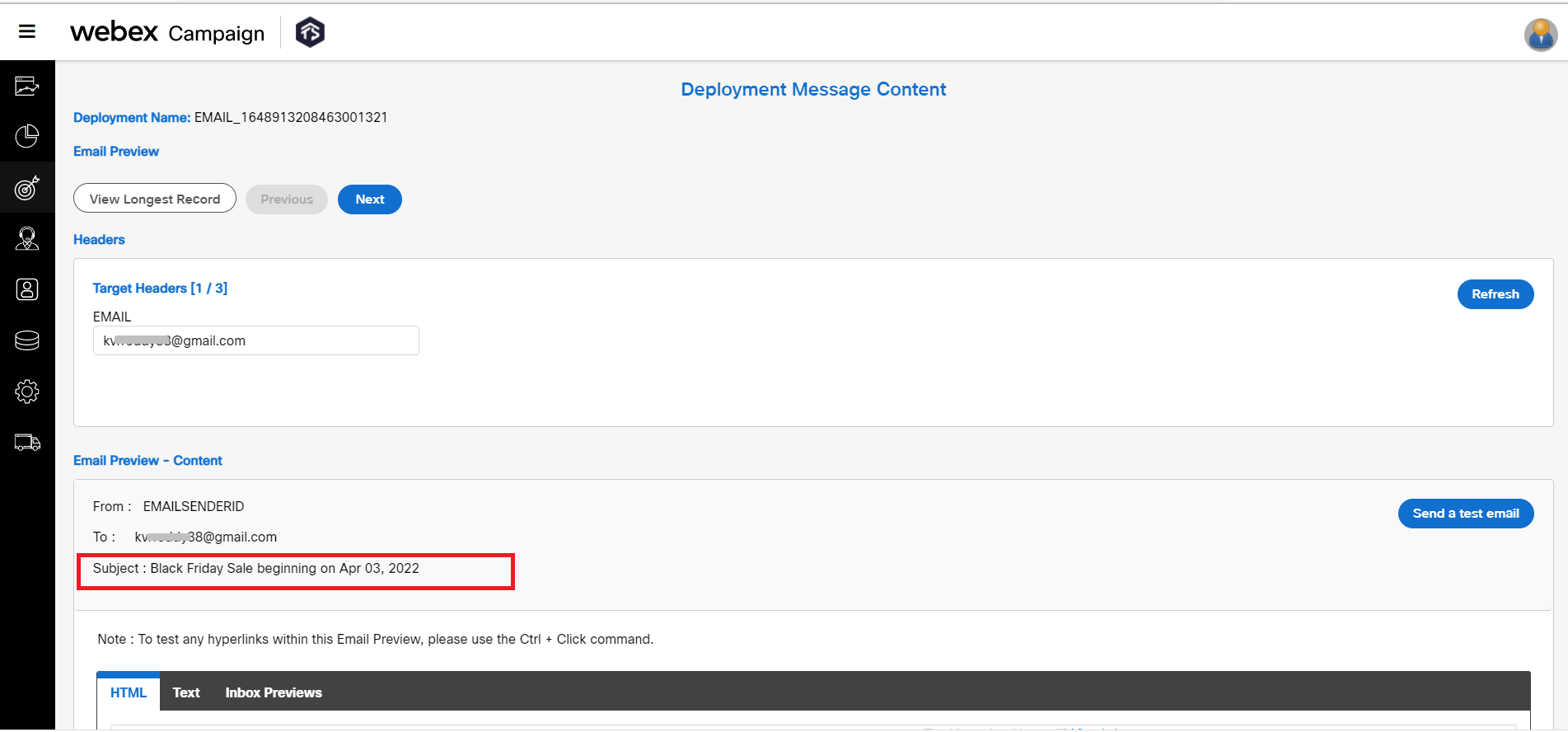Google Analytics UTM Tags Node
UTM Tags are snippets of text added to the end of a URL within an email to help you track where website traffic comes from within your Google Analytics implementation. This allows marketers to attribute the acquisition/ click-through/ conversion/ revenue etc. to specific deployments.
Below is a sample link with UTM tags.

Webex Campaign currently supports the following 3 UTM tags:
- UTM Source
- UTM Medium
- UTM Campaign
This node is used to configure Google Analytics UTM Tags for the Email channel. On the deployment builder screen, the Email channel node will display an ellipses icon to add the Google Analytics UTM Tags node. Click on the Ellipses icon and click Google Analytics UTM Tags.

The UTM tags that can be configured are displayed on the right pane.

Configuring Google Analytics UTM Tags Node
- On the Deployment Builder screen, select the UTM Tags node, the configuration settings are displayed in the right palette.
- Select UTM Source, UTM Medium and UTM Campaign from the respective drop-downs.
-
UTM Source: This UTM tag is typically used to track where the traffic is coming from. Within the context of Webex Campaign, you might want to select a value such as ‘Webex Campaign’ or possibly the ‘Campaign Name’ within Webex Campaign.
-
UTM Medium: This UTM tag is typically used to track how the traffic is getting to you, rather than where the link actually lives. Google recommends using this field to identify the marketing medium or channel. For example, ‘Email’.
-
UTM Campaign: This UTM tag is typically used to track which campaign the traffic was generated by. Within the context of Webex Campaign, we would recommend using the ‘Deployment Name’ or ‘Deployment ID’ for this tag.
You can select one of the following values to assign to each of the above 3 UTM tags:
- Campaign Name
- Campaign ID
- Deployment Name
- Deployment ID
- Channel
- Custom Text
The 'Custom Text' field can only contain the following characters: A-Z, a-z, 0-9, and all special characters (apart from &><#/ \ %).
- Click Save Changes.
All your original links will be suffixed with UTM Tags selected above. If any link in your HTML context already has UTM Tags, they will not be replaced.
Usage Notes:
- If your HTML email content has one or more URLs with UTM tags already appended, Webex Campaign will recognize these and continue using the UTM tags already present in your content.
- UTM tags will be appended to links inside the Conditional Logic of an Email Partial – if the Partial is being used as a ‘Static Partial’ (i.e. when the Partial is being directly referred to by its name in the email HTML content on the WHAT tab ). For Dynamic Partial UTM tags will not be appended.
- UTM tags will not be appended to links within emails sent to the Seed List contacts.
- If your HTML content has any URLs directly linking to a PDF document, then appending UTM tags will invalidate these URLs. So, it is recommended that you use the ‘notrack’ keyword to override the automatic link tracking for such ‘/some-doc.pdf’ links and then manually remove the appended UTM tags by editing the HTML content on the ‘Compose [Email]’ accordion.
Using the dynamic parameter pushed date in Email Content and UTM Tags
You can pull the ‘message pushed date’ dynamically in your Email Content. You can use the system reserved parameter ‘$(sys_pushed_date)’ in your Email Subject line, Email Content or UTM Tags and it will be replaced by the date in the MMM DD, YYYY format. The following screenshots show how this feature can be used within your Email channel deployments.



Updated about 2 months ago